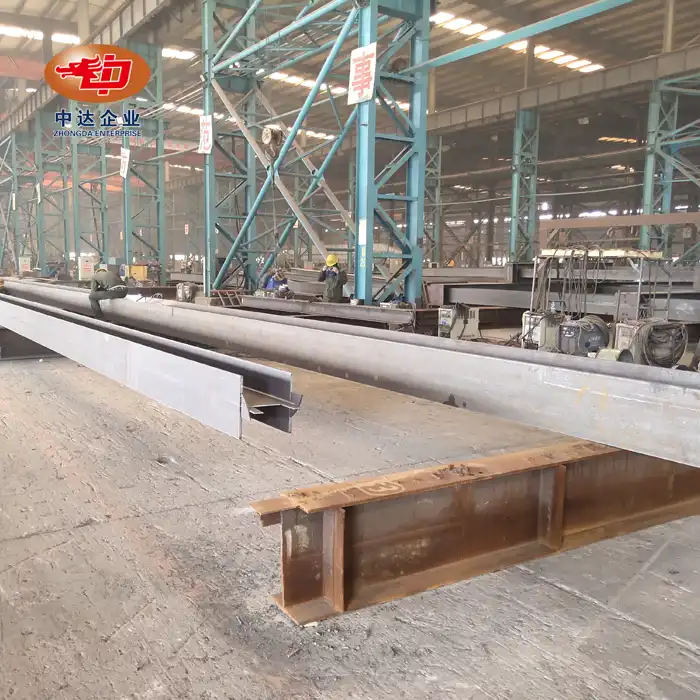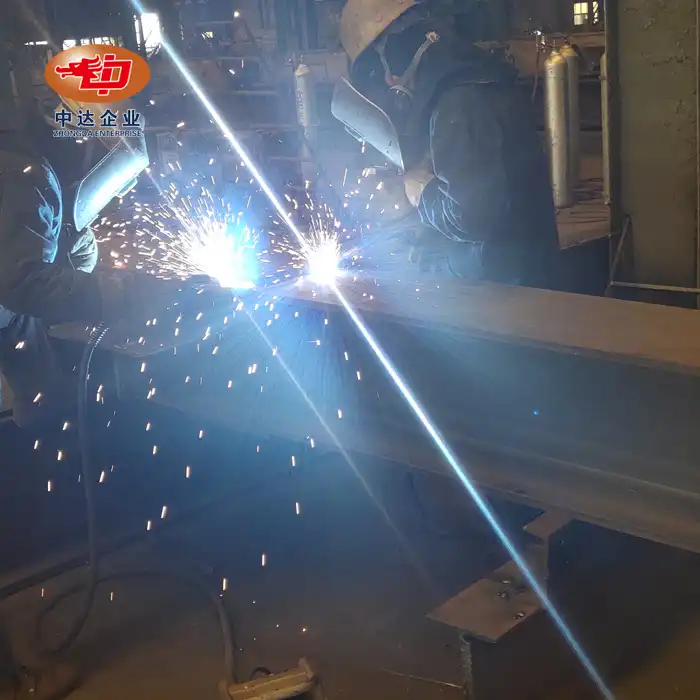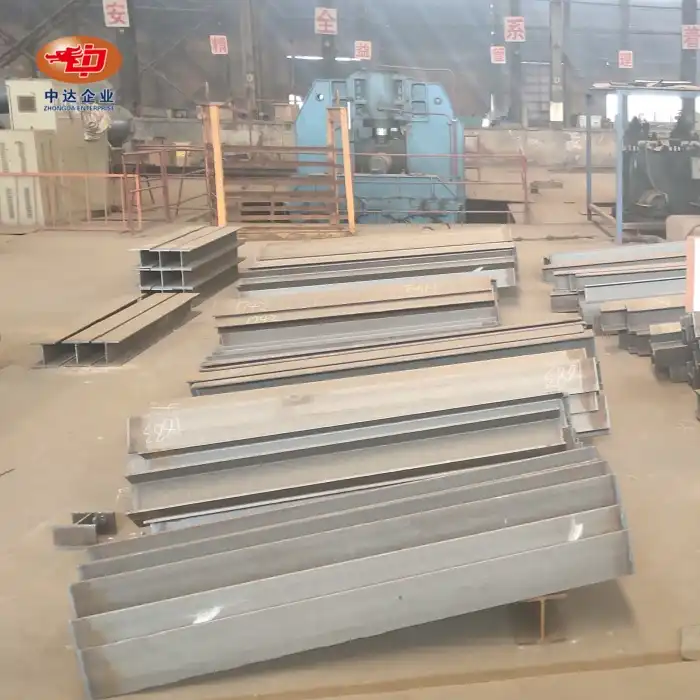At Zhongda Steel, we understand the critical nature of corrosion prevention in steel structures. Our expertise in -60°C Weathering Steel Anti-corrosion Technology and precision manufacturing ensures that our bolted steel truss bridges and other structures stand the test of time, even in the most demanding environments. Let's delve deeper into effective strategies for combating corrosion in hot and humid conditions.
Understanding Corrosion in Hot and Humid Environments
The Science Behind Corrosion
Corrosion is an electrochemical process that occurs when metal is exposed to oxygen and moisture. In hot and humid environments, this process is accelerated due to increased temperature and moisture levels. The combination of heat and humidity creates an ideal breeding ground for corrosion, particularly on exposed metal surfaces like bolts and structural components.
The rate of corrosion can be influenced by various factors, including the type of metal, environmental pollutants, and the presence of corrosive chemicals. Understanding these factors is crucial for developing effective prevention strategies.
Impact on Bolted Steel Truss Bridges
Bolted steel truss bridges are particularly vulnerable to corrosion in hot and humid climates. The numerous joints and connections in these structures create potential weak points where moisture can accumulate and initiate the corrosion process. Over time, this can lead to structural weakening, reduced load-bearing capacity, and increased maintenance costs.
The bolts themselves are often the first components to show signs of corrosion, as they are exposed on all sides and subject to various stresses. Corrosion of bolts can lead to loosening, reduced clamping force, and ultimately, structural failure if left unchecked.

Environmental Factors Accelerating Corrosion
Hot and humid environments present unique challenges for steel structures. High temperatures increase the rate of chemical reactions, while humidity provides the moisture necessary for corrosion to occur. Additionally, coastal areas introduce salt spray, which can significantly accelerate the corrosion process.
Other environmental factors that can exacerbate corrosion include air pollution, acid rain, and industrial emissions. These elements can create a corrosive atmosphere that rapidly degrades unprotected steel surfaces.
Advanced Corrosion Prevention Techniques
Hot-Dip Galvanization Process
Hot-dip galvanization is a highly effective method for protecting steel from corrosion. This process involves immersing steel components in molten zinc, creating a metallurgically bonded coating that provides both barrier and cathodic protection. For bolts and fasteners used in hot and humid environments, hot-dip galvanization offers superior corrosion resistance.
At Zhongda Steel, we ensure our hot-dip galvanized bolts comply with ISO 1461 standards, guaranteeing a zinc layer thickness of ≥85μm. This thick, durable coating significantly extends the lifespan of bolts and other structural components, even in the most challenging environments.
Epoxy and Polyurethane Coatings
Epoxy and polyurethane coatings provide an additional layer of protection for steel structures such as bolted steel truss bridges. These high-performance coatings create a barrier that prevents moisture and corrosive elements from reaching the metal surface. Epoxy coatings are particularly effective as a base layer due to their excellent adhesion properties and chemical resistance.
Polyurethane coatings, often applied as a topcoat, offer superior UV resistance and maintain their appearance over time. This combination of epoxy and polyurethane coatings provides a robust defense against corrosion while also enhancing the aesthetic appeal of the structure.
Innovative Alloy Technologies
The development of corrosion-resistant alloys has revolutionized the field of structural engineering. These advanced materials, such as weathering steel and duplex stainless steel, offer inherent resistance to corrosion without the need for additional protective coatings.
Zhongda Steel's expertise in -60°C Weathering Steel Anti-corrosion Technology demonstrates our commitment to innovation in this area. By incorporating these advanced alloys into our designs, we can create structures that maintain their integrity even in the harshest environments, from arctic bridges to tropical industrial facilities.
Maintenance Strategies for Long-Term Corrosion Prevention
Regular Inspection and Monitoring
Implementing a robust inspection and monitoring program is crucial for early detection and prevention of corrosion. Regular visual inspections can identify signs of corrosion before they become severe. Advanced techniques such as ultrasonic testing and infrared thermography can detect hidden corrosion and assess the thickness of protective coatings.
For bolted connections, monitoring bolt preload is essential. Changes in preload can indicate loosening due to corrosion or other factors. By incorporating these inspections into a regular maintenance schedule, potential issues can be addressed proactively, preventing costly repairs and ensuring the longevity of the structure.

Reapplication of Protective Coatings
Even the most durable protective coatings on bolted steel truss bridges will degrade over time, especially in hot and humid environments. Establishing a schedule for reapplication of protective coatings is essential for maintaining corrosion resistance. This may involve cleaning the surface, removing any existing corrosion, and applying new layers of epoxy or polyurethane coatings.
At Zhongda Steel, we recommend designing structures with maintenance in mind. This includes providing access points for inspection and reapplication of coatings, ensuring that all critical components can be easily maintained throughout the structure's lifetime.
Environmental Control Measures
In some cases, implementing environmental control measures can significantly reduce the risk of corrosion. This may include improving drainage to prevent water accumulation, installing dehumidification systems in enclosed spaces, or using sacrificial anodes in marine environments.
For industrial facilities in hot and humid climates, controlling air quality and reducing exposure to corrosive chemicals can extend the life of steel structures. These measures, combined with proper material selection and protective coatings, create a comprehensive approach to corrosion prevention.
Conclusion
Preventing bolt and structural corrosion in hot and humid environments requires a multifaceted approach combining advanced materials, protective coatings, and diligent maintenance. By implementing these strategies, the lifespan and safety of steel structures can be significantly extended, even in the most challenging climates. Zhongda Steel's expertise in corrosion-resistant technologies and precision manufacturing ensures that our structures, from bolted steel truss bridges to industrial facilities, stand up to the toughest environmental conditions.
Contact Us
For expert guidance on corrosion prevention and high-quality steel structures engineered to withstand hot and humid environments, trust Zhongda Steel. Our innovative solutions and commitment to quality make us the ideal partner for your next project. Contact us at Ava@zd-steels.com to learn how we can help you build structures that stand the test of time.














